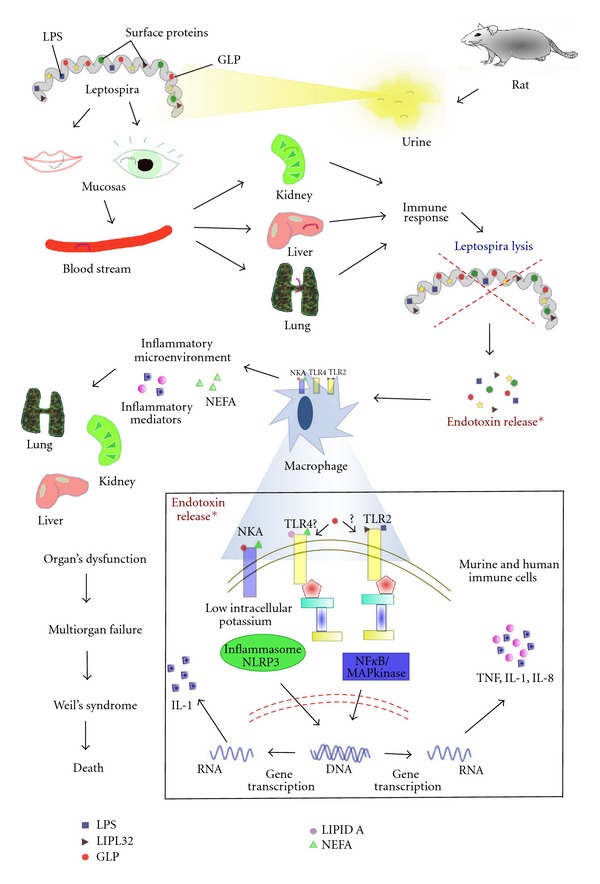Figure 1.

Severe leptospirosis: from the infection to immunological target. Due to their mobility, leptospiras are able to penetrate mucosal tissues and injured skin. Transported by the blood stream, they reach target organs, mainly the kidney and liver. The host immune response kills the bacteria, promoting endotoxin release. The innate immune system of both human and mouse recognizes endotoxins through specific receptors. This immune cell response is mediated by Toll-like receptors and Na/K-ATPase, which sense antigen molecules and trigger intracellular signaling pathways driving the translocation of transcription factors, leading to increased inflammatory mediator production. This scenario creates an inflammatory microenvironment that can lead to organ dysfunction. Another important observation in this disease is the increased NEFA levels in the systemic circulation (mainly oleic acid). Augmented albumin unbound-NEFA may play an important role in multiorgan dysfunction by acting on endothelium and immune cells. TLR2: Toll-like receptor 2; TLR4: Toll-like receptor 4; NKA: Na/K-ATPase; NF-κB: nuclear factor kappa-light-chain-enhancer of activated B cells; NEFA: nonesterified fatty acid; LIPL32: major outer membrane leptospiral lipoprotein; GLP: leptospiral glycolipoprotein.
